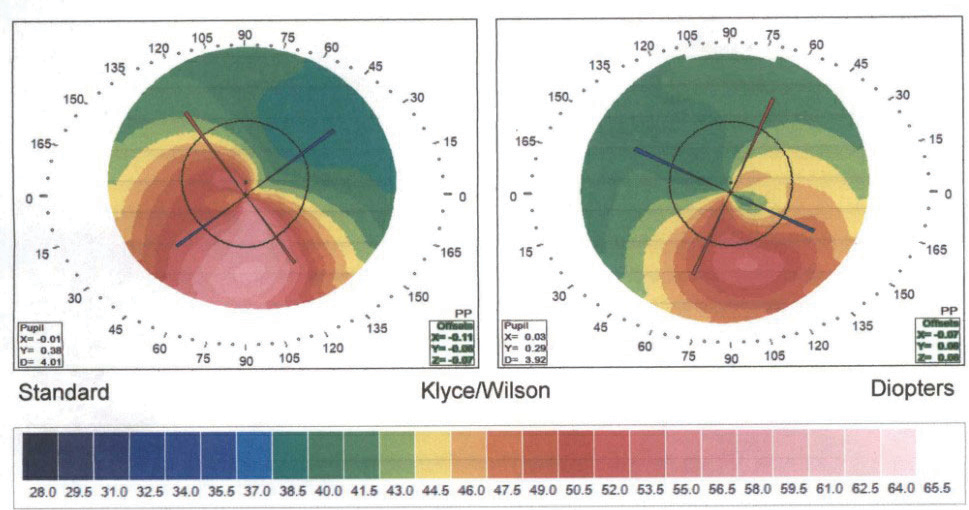 |
Q:
I recently received a referral from a cornea specialist to fit a keratoconus patient with contact lenses. The patient is taking 400mg of riboflavin, which the specialist states has helped stabilize the cornea. Is the referring doctor expecting ultraviolet (UV) exposure to help stabilize the cornea similar to a corneal crosslinking (CXL) procedure?
A:
Until recently, there was no treatment or intervention that could successfully alter the progressive nature of keratoconus, according to Nurit Wilkins, OD, clinical instructor at the University of Maryland School of Medicine. Management included visual correction with corneal and scleral gas permeable contact lenses and corneal transplantation in cases of advanced disease. Now, the FDA-approved CXL procedure can halt the progression of the condition by applying topical riboflavin (vitamin B2) to the cornea and immediately exposing it to UV light emitted by an approved device.
The process stimulates the formation of new crosslinks between the collagen fibers of the cornea, causing the fibers to become shorter and thicker and the cornea to stiffen. This in turn strengthens and stabilizes the corneal stroma and prevents progressive thinning, scarring and bulging that are seen in keratoconus.
 |
| The corneal topography of a 20-year-old who has undergone CXL shows irregular inferior steepening consistent with keratoconus in the right eye more so than the left. Data collected annually will continue to assess for corneal stability vs. progression. Click image to enlarge. |
Bridge the Gap
While CXL has been effective in delaying the progression of keratoconus and sequelae of the condition, Dr. Wilkins says there are several limitations of this treatment, including lack of availability and high cost.
Recently, some clinicians reported that they might have found a solution, suggesting that high doses of oral riboflavin combined with sunlight can stabilize the cornea similarly to treatment with CXL. One study evaluated topographic corneal changes in three individual cases of patients ingesting 400mg to 800mg of riboflavin supplements daily.1 Researchers observed corneal flattening and improved visual acuity in each case—similar outcomes to CXL.1
In a small, unpublished study, all seven participants taking dietary riboflavin achieved corneal stabilization and/or flattening.2 The investigator is studying this further through an IRB-approved trial overseeing patients who ingest 400mg of vitamin B2 and spend 15 minutes outside each day without sunglasses.2
If the combination of oral riboflavin and sunlight does indeed have mechanisms that are similar to CXL, Dr. Wilkins notes that corneal stabilization could be offered to more patients and at a lower cost. The current state of research is preliminary, however, she emphasizes.
While current case reports are exciting and promising, Dr. Wilkins concludes that, in the absence of evidence-based clinical trials supporting the practice of prescribing dietary riboflavin supplementation for the treatment of keratoconus, clinicians should exercise caution when discussing this with patients. She looks forward to seeing the results of ongoing and future clinical trials.
| 1. Schaeffer K, Jarstad J, Schaeffer A, et al. Topographic corneal changes induced by oral riboflavin in the treatment of corneal ectasia. Invest Ophthalmol Vis Sci. 2018;59:9. 2. Dietary riboflavin (vitamin B2) and cornea crosslinking. NIH Clinical Trials. clinicaltrials.gov/ct2/show/NCT03095235. March 29, 2017. Accessed December 19, 2019. |

